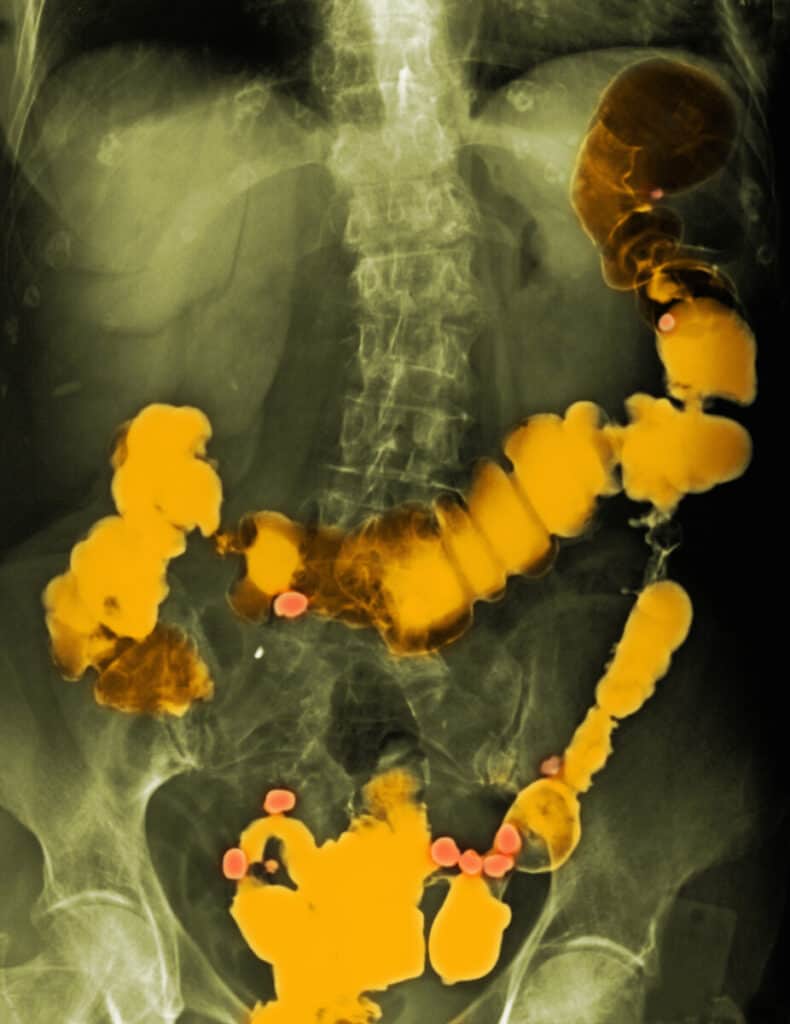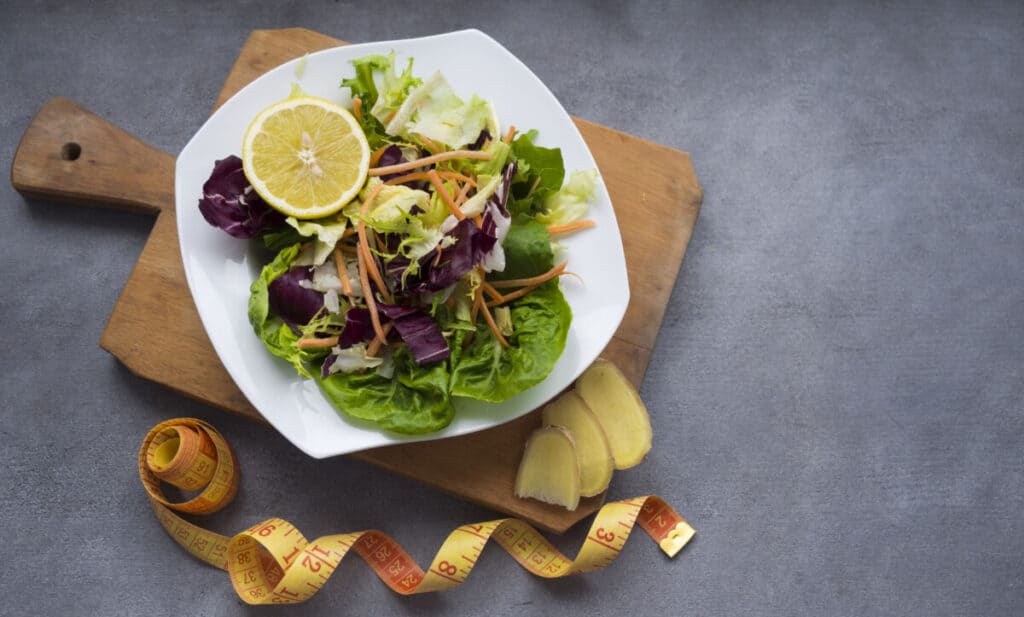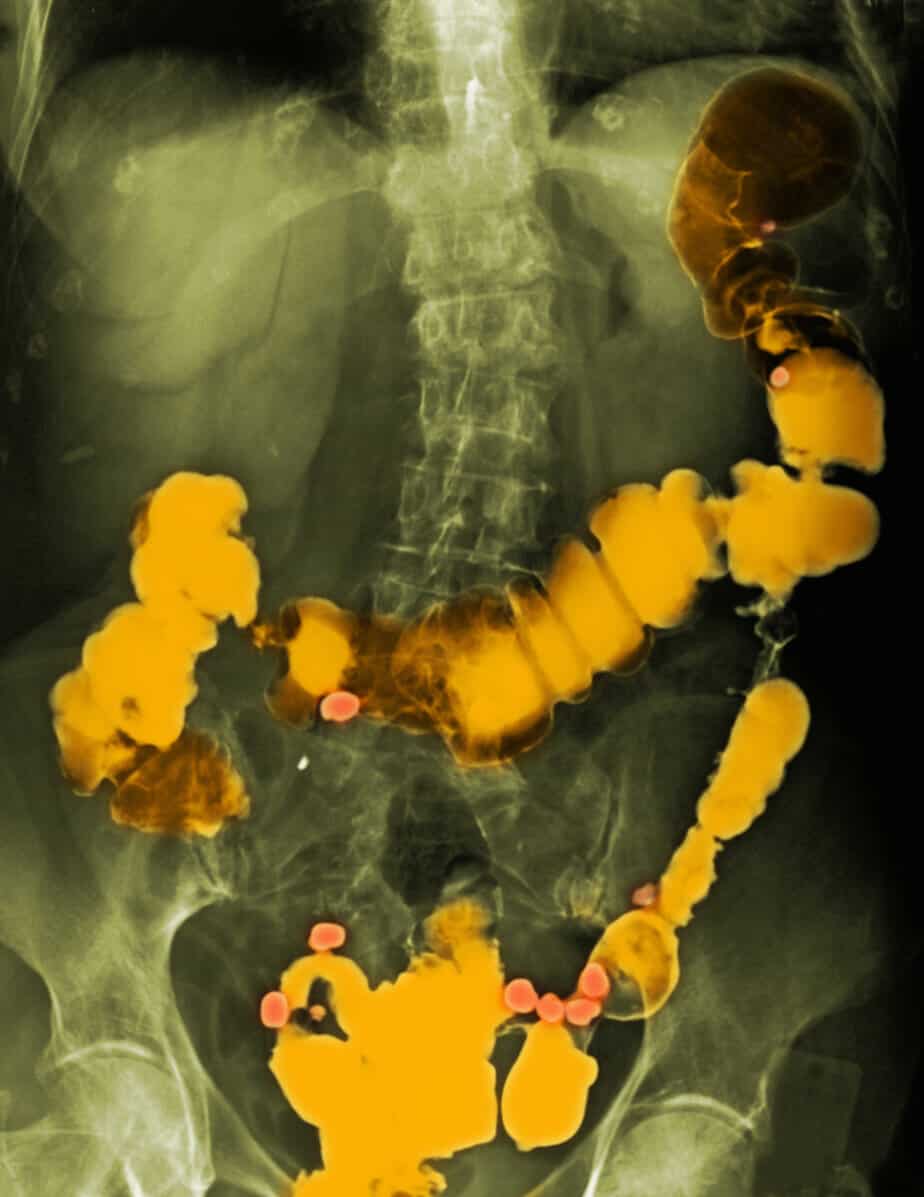Estimated reading time: 7 minutes
What is Diverticulitis?
Diverticulitis is an infectious and inflammatory complication of diverticulosis. Diverticulosis is the occurrence of herniations or outpouchings primarily in the colon wall. However, they can occur anywhere in the G.I. tract except the rectum.
Diverticulitis is when one or more of these pouches become obstructed and infected. They can become abscessed and can perforate, or rupture. Abdominal sepsis may develop because of this. In the past surgery was more commonly used to remove the colon after several bouts. However, now surgery is a much less frequent option in the treatment course.
Table of contents
What are the Risk Factors?
Risk factors include:
- Family history
- Smoking
- Low fiber diet
- High consumption of animal proteins (meat and dairy)
- Obesity.

Over 50% of people over age 60 in the US have diverticulosis. In those under 60, it’s more common in men, but over 60 years it is more common in women. The incident in those aged 40 to 49 is dramatically increasing by as much as 132% in recent decades. In general, people North America and Europe have a higher rate diverticular disease than the rest of the world. At one time diverticulosis was thought to be a rare rarely diagnosed medical curiosity, but now in the US there are nearly 3 million outpatient visits per year for this with nearly 300,000 hospital admissions.
It began rising in incidence during the Industrial Revolution when doctors began noticing it more and more. The cause is thought to be to a low-fiber diet in the Western world. Low-fiber diets combined with genetics tend to form low-caliber small caliber stools which in turn generates increased colonic pressure when trying to pass it with straining etc. As a result there are herniations around pouching’s in the wall of the colon where the blood vessels from outside dive through the muscular wall to feed the inside of the colon. That condition is called diverticulosis.
Because diverticulosis herniations occur at the place where arteries dive in from the outside of the colon to the inside, diverticular bleeding is the cause in over 40% of all cases of lower G.I. bleeding. Diverticular bleeding is typically without symptoms except for blood in the stool. It usually is not painful. The use of nonsteroidal anti-inflammatory’s, or NSAIDs, increases the risk of this happening.
If you have diverticulosis your lifetime risk of getting diverticulitis is 10-25%. Having had one bout of diverticulitis, your risk of recurrence is 5-20%. Having another recurrence does not increase your risk of having a severe recurrence.
How Many Cases of Diverticulitis Are There?
Incidence in the US is 62 per 100,000 in Caucasians, 30 per 100,000 in Hispanics and Blacks, and 10 per 100,000 in Asians. People who moved from Asia to the Western world have an increasing rate of diverticulosis depending on how long they have been in the Western culture. and seems to be related to diet. There is also increasing thought that the highly inflammatory Western diet also plays a contributing role. The Western diet high in animal proteins and dairy products tend to lead to chronic inflammation states due to reactions against these animal proteins. Different individuals have different bacteria make up in their gut micro biome. This may also play a role.

Diverticulosis may be present despite being completely unaware of it until experiencing symptoms of pain, typically in the left lower quadrant. However, it can be on the right side of the colon as well which is more common in Asians.
What are the Symptoms?
Symptom onset can be gradual or over several days and include
- Nausea, rarely with vomiting
- Fevers including chills
- Loss of appetite
- Bloody stools typically bright red
Symptoms can be similar to irritable bowel syndrome which includes cramping and change in bowel habits. Colon cancer is in the differential diagnosis of an ongoing undiagnosed abdominal pain. Typically once the diagnosis is made treatment is undertaken and after everything settles down a colonoscopy is typically suggested in order to look at the inside of the colon to confirm diverticular diverticulosis and to rule out things like colon cancer.
What is the Treatment for Diverticulitis?
Treatment typically consists of one or two antibiotics over the course of 7 to 10 days. A clear liquid diet for two or three days to gives the bowel time to rest, and then you can advance the diet as able. In the long run increasing fiber in your diet is very beneficial. Pain control is an important part of the treatment as well. Due to the increasingly recognized role of inflammation, both acute and chronic, this has changed the approach to the treatment of uncomplicated diverticulitis to become less aggressive, both medically and surgically. There are studies going on that are trying to determine if antibiotics bring an actual benefit. Some studies have suggested that antibiotics do not improve outcomes. This has yet to be sorted out completely. In general it should be an individualistic approach based on the risk factors in each case.
How is Diverticulitis Diagnosed?
The diagnostic workup can be limited to clinical findings such as abdominal pain, typically in the left lower quadrant area, especially if you have previously been diagnosed with diverticulosis. Other elements of the workup may include bloodwork including a complete blood count. CT scans may sometimes be very helpful, as can ultrasound in the hands of a skilled ultrasound tech.
What Are the Complications?
Complications of diverticulitis occur in 12% of cases of diverticulitis. Most common is an abscess which accounts for 70% of those complications. Other complications include abscess perforation which leads to peritonitis, others include bowel obstruction, and fistula formation. A fistula is an infectious tract tunneling from one organ to another, such as from the colon to the bladder. Those are more likely to need surgery.
Up to 10% of diverticulitis patients develop ongoing or smoldering diverticulitis, marked by pain with increased white blood cell counts or markers of inflammation, or CT evidence of inflammation despite treatment with antibiotics.
About 8-10% of people with diverticulitis will have a recurrence within one year after complete recovery, and 20% will have a recurrence within 10 years. After a second episode, your risk of the third bout is 18% in one year and 55% at 10 years. In the UK in one study mortality at one year was 20% in people with perforated diverticulitis compared to 4% in others.
At one time diverticulitis was thought to be a progressive disease but is no longer thought to be progressive, which is why surgery is less of an option for treatment that was in the past.
Other risk factors besides family history of obesity and low fiber diet in high animal protein diet includes smoking, genetic factors, and reduced physical activity. It is not clear whether or not alcohol affects the risk. Medications that increase the risk include all NSAIDs, steroids, and opiates or narcotic pain medicines.
What’s a Low Risk Lifestyle for Diverticulitis?
A low risk food lifestyle is considered to be less than four servings of red meat per week and at least 23g of fiber per day, two hours of vigorous activity per week, and a BMI in the 18 to 25 range as well as a non-smoking history.
in the 18 to 25 range as well as a non-smoking history.
Those with a higher fiber diet tend to have greater bacterial diversity in their colon and gut. This tends to improve the overall function of the gut including favoring bacteria that metabolize complex carbohydrates fibers, into short-chain fatty acids. This improves the overall function of the antimicrobial (antibiotic-like) peptides in the gut and in the production of mucus, which all serve to protect the gut from inflammation and infection.
Is Diverticulosis / Diverticulitis Preventable?
If you’re young and have never had this condition, you can prevent it by losing weight, changing to a high-fiber diet, and exercising regularly.
If you’re older and already have established diverticulosis, you can still benefit yourself by losing weight and changing to a high-fiber diet and exercising regularly. This may reduce your risk of recurrence.
In the past it was recommended that people with diverticulosis should avoid seeds, nuts, and popcorn. However, that has not been shown to be beneficial and that is no longer the current recommendation.
To Your Good Diverticulitis Free Intestinal Health,
Kevin McCurry, MD
recent posts
Estimated reading time: 5 minutes So, what is monkeypox? 1958 brought the discovery in monkeys of a relative to the deadly Smallpox virus. It was named...the Monkeypox virus. Fortunately,...
Estimated reading time: 10 minutes Table of contentsAntibiotics are the Answer, Right?How Antibiotics WorkThree Types of InfectionsAntibiotics & Ear InfectionsHead Colds, or Upper Respiratory...


